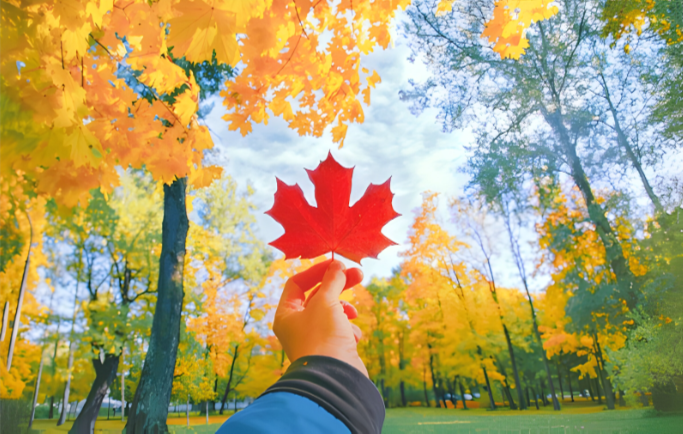Canada is a country renowned for its stunning natural beauty and the iconic maple leaf that symbolizes its rich heritage. However, beneath this vibrant emblem lies a tapestry of dynamic urban landscapes that showcase the nation’s modern spirit and innovative design. From bustling cityscapes to revitalized historical districts, Canada’s urban environments offer a unique blend of old and new, reflecting both its multiculturalism and its forward-thinking ethos. In this exploration of Canada’s urban landscapes, we delve into the architectural marvels, cultural hubs, and sustainable initiatives that define the country’s cities today.
Toronto: A Hub of Modernity and Diversity
Toronto, Canada’s largest city, is a testament to urban evolution. Skyscrapers such as the CN Tower dominate the skyline, symbolizing the city’s growth and ambition. Yet, it’s not just the high rises that define Toronto. The Distillery District, a historic area with Victorian-era buildings now housing art galleries, boutiques, and eateries, highlights the city’s commitment to preserving history while fostering innovation. Additionally, Toronto’s diverse neighbourhoods, from the trendy Queen Street West to the vibrant Kensington Market, offer a microcosm of global cultures and cuisines, making the city a melting pot of experiences.
Vancouver: Green Spaces and High-Tech Solutions
Vancouver stands out for its remarkable integration of urban living with nature. The city’s commitment to sustainability is evident in its numerous green initiatives and eco-friendly designs. The Greenest City Action Plan is a prime example, aiming to make Vancouver the greenest city in the world by 2020. Beyond its green credentials, Vancouver’s architectural landscape features striking modern buildings like the Vancouver House and the iconic Canada Place, blending functionality with aesthetic appeal. The city’s waterfront parks and mountains offer a unique juxtaposition, making Vancouver a city where nature and urbanity coexist harmoniously.
Montreal: Historic Charm Meets Contemporary Flair
Montreal, with its rich French heritage and vibrant arts scene, provides a fascinating contrast to the other major Canadian cities. The historic Old Montreal district, with its cobblestone streets and 17th-century architecture, offers a glimpse into the past. In contrast, the city’s burgeoning arts district, including the Montreal Museum of Fine Arts and the Place des Arts, showcases its contemporary cultural scene. Montreal’s focus on preserving its historical essence while embracing modernity is evident in projects like the revitalization of the Quartier des Spectacles, which blends cultural events with innovative urban design.
Calgary: Embracing the Future with Bold Designs
Calgary, known for its proximity to the Rocky Mountains, is a city on the rise with a growing reputation for architectural innovation. The Calgary Tower and the new Central Library are prime examples of how the city blends practicality with striking design. The Central Library, designed by architect Snøhetta, features a unique, curvilinear form that has quickly become a landmark. Calgary’s Urban Campus, an initiative to create a mixed-use, sustainable development, reflects the city’s forward-thinking approach to urban planning and development.
Ottawa: The Fusion of Tradition and Modernity
As the nation’s capital, Ottawa boasts a unique blend of historical significance and modern development. The Parliamentary Hill, with its Gothic Revival architecture, remains a symbol of Canadian governance. However, Ottawa is also home to modern structures such as the Canadian Museum of History and the redeveloped Lansdowne Park. These projects highlight the city’s commitment to blending its rich historical roots with contemporary urban development.
Embracing Sustainable Urban Futures
Across Canada, cities are increasingly focusing on sustainability and smart growth. Green building initiatives, such as LEED certification and energy-efficient designs, are becoming standard in urban development. Projects like Toronto’s Smart Cities Initiative and Vancouver’s sustainable transportation networks underscore a national commitment to reducing carbon footprints and enhancing livability.
Conclusion
Canada’s urban landscapes are as diverse and dynamic as the country itself. From Toronto’s bustling streets and Vancouver’s green spaces to Montreal’s historic charm and Calgary’s bold new designs, each city offers a unique perspective on urban living. As Canada continues to innovate and evolve, these urban environments will undoubtedly reflect the country’s growing emphasis on sustainability, inclusivity, and modernity. For those keen on exploring beyond the iconic maple leaf, Canada’s cities provide a rich tapestry of experiences that embody both tradition and progress.
Discover more about Canada’s urban landscapes and explore further insights at Pritish Kumar Halder.










